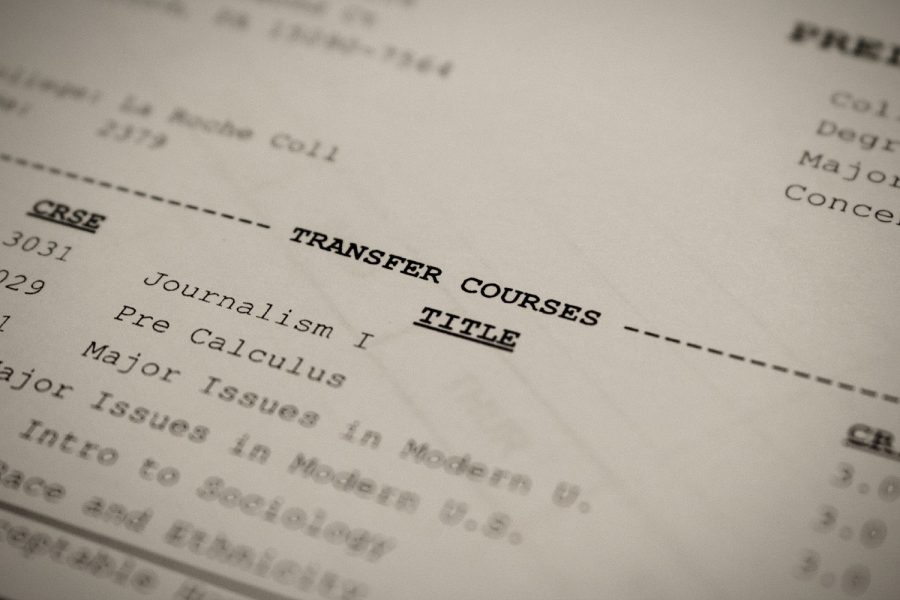A Sophomore before Her Time
For alum Lucie Flagg, ’21, freshman year at college is proving a lot shorter than expected.
Dual-enrollment courses can give students a head start in college, and they often do not entail the same level of stress that AP exams do.
November 4, 2021
I graduated from North Allegheny a little over four months ago, and in less than two months, I will be a college sophomore. I could go on a rant about how fast time flies and how crazy it is that I’m almost a sophomore already, but the truth is, time has nothing to do with it. For me, I’m already almost a sophomore solely because of the dual enrollment I took advantage of at NA.
It might sound cheesy–I know–but hear me out. Participating in La Roche’s dual enrollment during my years at NASH was perhaps one of the greatest investments I have made throughout my life thus far, and I wish more people did the same. The fact that I’m taking the time to write this article for my former high school’s newspaper whilst attending my dream college proves just how important it is to me that more people are educated on college in high school opportunities.
Looking back at my time in high school, particularly sophomore year, I was beyond stressed. And I know there’s no one exact cause for such stress, but taking hard classes was definitely a key factor. I took Human Geography–the first AP class North Allegheny offers to its students. I, like many of my peers, signed up for the class because I thought that getting an early start on college credit through APs was the only way I would be successful. But I only further damaged myself throughout the process.
I struggled to wrap my head around the subject, thus inviting monstrous amounts of stress into my life. The stress quickly turned physical, and I struggled with numerous medical problems. I tried hard to ignore the foundation of my troubles but eventually had to drop out of my AP class in the very middle of the school year. I felt like a failure. I thought that I’d never get into a good college.
But here I am now, at the school of my dreams with zero AP classes (besides the one I dropped out of) on my resume and 32 credits (almost) down. So, here’s what I’ve come to learn: the emphasis on (and ensuing stress of) AP courses need not apply to you if you participate in every dual enrollment opportunity possible.
I took five classes, regular classes, at NASH in conjunction with La Roche University. These classes were no harder than any other class, and students who opted into dual enrollment were treated no differently than those who decided not to. And from just those five classes–classes that I would have taken either way–I received 15 transfer credits. In other words, I arrived as a college freshman with practically an entire semester already under my belt.
Perhaps the biggest difference between APs and dual enrollment, besides the drastic difference in potential stress levels, is the approach to actually obtaining earned credits. Students who participate in dual enrollment have guaranteed credit if their final grade in the class is a C or above. Simply signing up for and completing an AP class, on the other hand, does not guarantee college credit. Rather, it all comes down to a score on one final exam–an exam that can be quite difficult. For example, a whopping 25 percent of students who took the AP Statistics exam this year got the lowest possible score (1/5), which means they received no credit at all, despite the work they put into their class and the money they spent on the exam.
Some high schools cover the costs of the AP exam for their students, although NA does not. In order to take each exam, students must pay the College Board $96. Often, students who take one AP class take numerous AP classes, and the payments year after year add up very quickly, which is difficult to justify if college credit is not received.
Admittedly, dual enrollment through La Roche University has a significantly heftier fee. Each class costs $235. From there, it becomes a matter of priorities. For some, it may be worth it to undergo a more difficult class, with a greater chance of stress, and take an exam that might not warrant college credit all for a cheaper price. However, for me, as someone who has first-hand experience with the physical appearance of stress, paying the additional $139 was one of the greatest investments I’ve ever made and kept my mental health in check throughout my time at NASH.
As a student who typically earned A’s and B’s, I had full confidence in myself that I would pass my dual enrollment classes and receive the credit. And I was right. For my five classes, which gave me 15 total credits, I paid a little under $1,200. The average cost of a single college credit hour in America is $594 and increases to $1,039 for those like myself who attend a private four-year university. This means that taking dual enrollment classes throughout my time at NASH saved me over $14,000.
AP classes, of course, have their own benefits and are a wonderful option when the course subject provokes curiosity and advances students’ skills. But take it from me, a recent graduate and current college student–participating in dual enrollment is an incredible investment that far too many people overlook.












